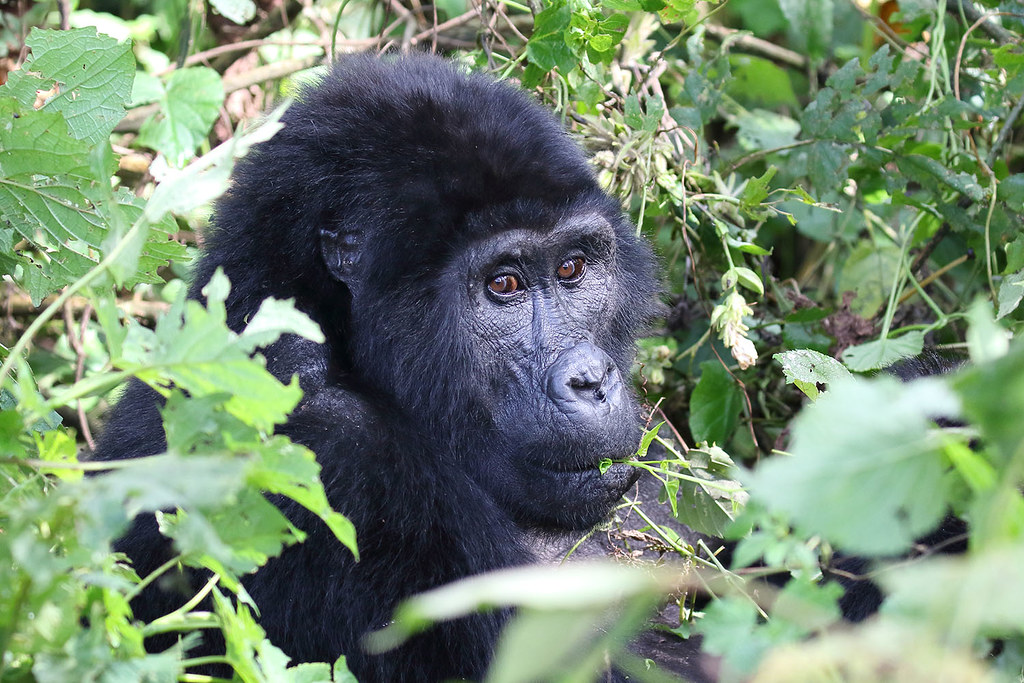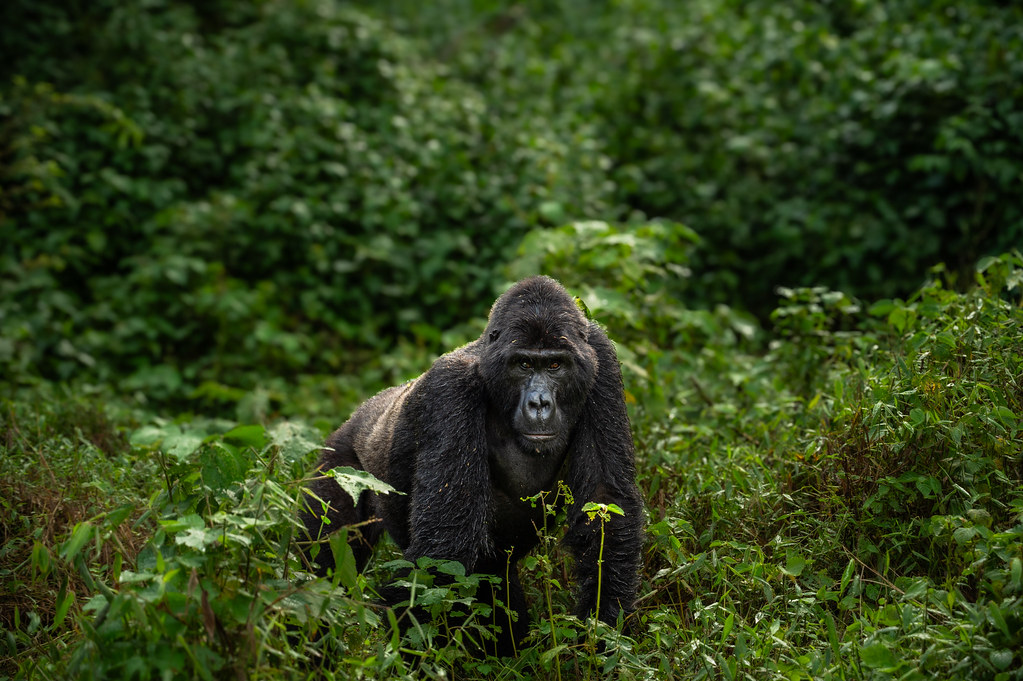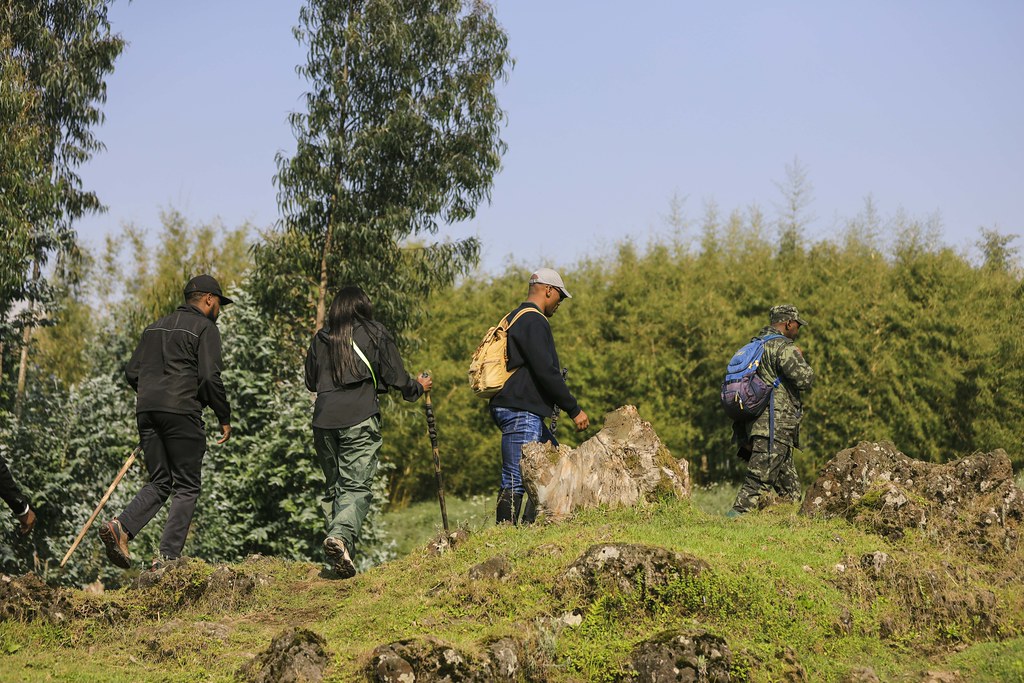Explorations of Mountain Gorillas in Rainforest Environments
Mountain gorillas in rainforest environments facts — How many mountain gorillas in rainforest environments — Why are mountain gorillas endangered — Mountain gorilla adaptations for survival — Rainforest gorilla facts — Mountain gorilla adaptations in the tropical rainforest — Mountain gorilla behavioral adaptations — Mountain gorillas habitat
Curious to discover the fascinating adaptations of mountain gorillas? This gorilla species roams the untamed landscapes of central Africa, especially within the captivating Virunga Massif Area.
This area is home to the 8 Virunga Volcanoes and the captivating sites of Mgahinga Gorilla National Park, Volcanoes National Park, and Virunga National Park.
Gorillas have evolved to flourish in the rugged mountains and lush rainforests, and there are several fascinating factors that we are about to uncover.
Adaptations of the Mountain Gorilla
- Just over 1000 mountain gorillas remain in the world, with around half of them residing in Bwindi Impenetrable National Park in Uganda.
- They inhabit communities of around 5-30 gorillas, guided by a commanding silverback who takes on the role of leader.
- The mountain gorilla boasts a remarkable 98% DNA similarity with humans, establishing them as our closest relatives in the animal kingdom.
- They can express emotions, share joy, and engage in playful activities just like humans.
- Each individual has unique nose prints, much like the distinct fingerprints found in humans.
- The gorilla species faced near extinction in the 19th century. Dian Fossey, an American primatologist, devoted her life to the thrilling pursuit of conserving and studying these fascinating primates.
- Her relentless fight against gorilla poachers culminated in her tragic murder in 1985 within her cabin at the Virunga Ranges.
- Since that time, numerous endeavors have been undertaken to protect and explore the lives of mountain gorillas.
Among the studies are gorilla adaptations to their wild surroundings, mountain gorilla behavioral changes, mountain gorilla survival strategies, gorilla adaptations in lush rainforests, mountain gorilla physical traits, mountain gorilla structural features, gorilla sensory modifications, and more.
How Gorillas Thrive in Their Surroundings
Mountain gorillas thrive in the chilly climates of their lush rain-forest habitats.
Their thick and long fur provides essential protection against the cold, shielding them from ailments such as colds, flu, and pneumonia. The dense hair serves as a shield against pesky insect bites.
Gorillas have embraced the art of socialization through their expressive body language and vocal sounds.
These apes possess lively faces that enable them to communicate emotions, needs, and desires to their fellow group members. This showcases a fascinating aspect of gorilla behavior.
Silverbacks guide gorilla clans
This has encouraged them to adjust their behaviors by forming families or groups, where the dominant silverback leads the daily routines such as waking up, feeding, and sleeping times. The Silverback holds the exclusive privilege of mating with the females in the group. When a juvenile or blackback feels the call to mate, they embark on a journey away from their group, seeking out new companions or venturing to create a fresh alliance of their own.
Gorillas thrive on the rich variety of vegetation found in their habitats.
They thrive on a diet of plants and fruits, as they are herbivores. They have thrived in the rainforest, effortlessly navigating their surroundings without the need to expend energy in pursuit of prey.
Gorillas possess fingers that enable them to skillfully crack open the shells of fruit.
Their thumbs stand out, larger than the rest of the fingers. They also let out loud cries or calls and use their arms in playful combat. A silverback will bravely defend his family, willing to sacrifice everything for their safety. This showcases a fascinating adaptation of gorillas for survival.
Gorillas thrive in their mysterious ways
They possess an innate ability to perceive threats and swiftly navigate away to sidestep further complications. A handful of daring souls will rise to face the looming danger.
Gorillas possess flat teeth that enable them to effectively chew and grind the cellulose found in their plant-based diet.
The bacteria in their colons play a crucial role in transforming food into a digestible form, working alongside the large intestines and carbohydrates through the fascinating process of fermentation.
Gorillas rely on their powerful arms to move through their environment.
Their powerful arms aid them in collecting foliage and navigating their surroundings.
Embark on an exhilarating journey with gorilla trekking and habituation.
Mountain gorillas have been acclimated for the thrill of tourism.
The habituation process brings about a transformation in their behavior. Gorilla trekking safaris offer an unforgettable experience that you simply cannot overlook during your journey to Africa.
Trekking can stretch for several hours because of the movement of these primates, but once you locate them, you get to spend an exhilarating hour in their presence.
Only eight lucky individuals can embark on a journey to visit a specific gorilla family each day. The cost of permits for gorilla trekking in Rwanda is $1500.
In Uganda, permits are priced at $800, while in Congo, they are available for $400.
Gorilla habituation occurs exclusively in Bwindi Impenetrable National Park in Uganda.
The habituation experience offers a more intimate setting compared to typical gorilla trekking, with fewer participants involved.
Experience an exhilarating four-hour encounter with scientists and researchers as you observe majestic mountain gorillas in their natural habitat.
A gorilla habituation permit is priced at $1500 in Uganda.
The ideal season for embarking on a trek to see mountain gorillas is during the dry months of December to January and June to September.
The wet season can present challenges for your safari, as rain may make trekking the trails quite difficult.



